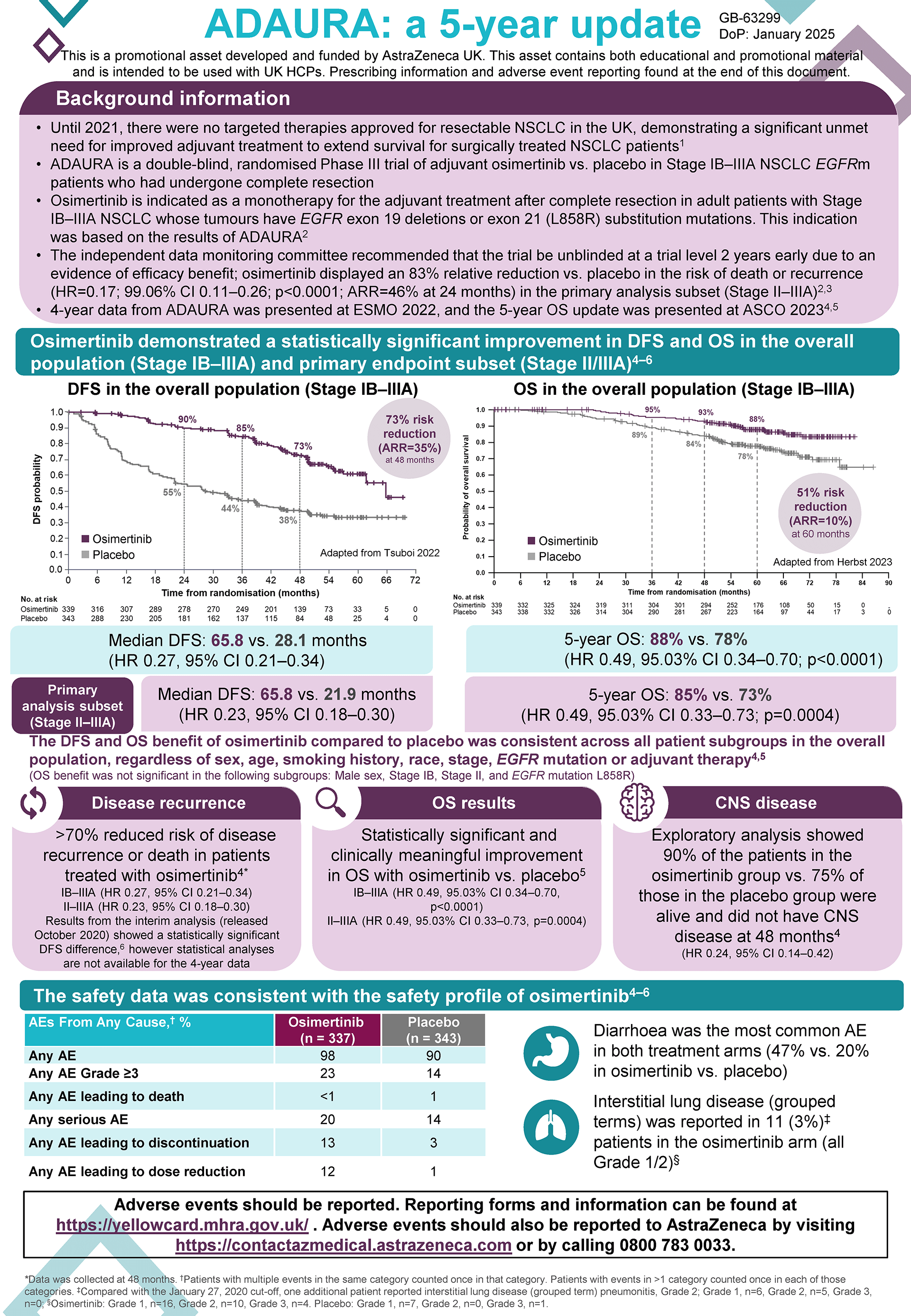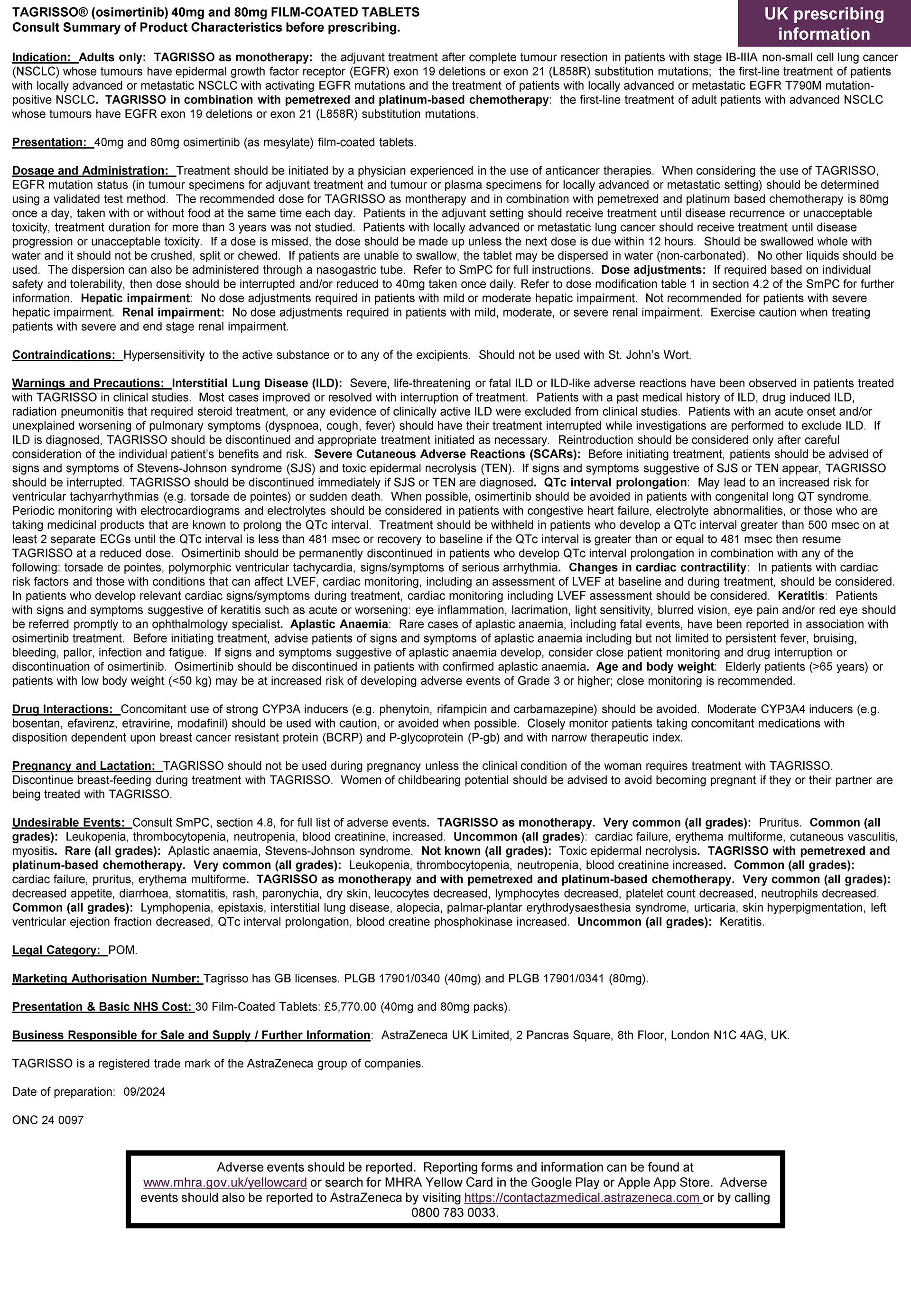Reflex testing is defined as ordering a standard group of pre-approved biomarker tests at the time of initial cancer diagnosis. Epidermal growth factor receptor mutations (EGFRm) are included in reflex testing bundles as standard in non- small cell lung cancer (NSCLC).1 The benefits of a reflex testing approach screening all tumours independent of staging (compared to bespoke testing) include:1–3
Increased numbers of patients tested for EGFRm
Streamlined pathology workload
A reduction in test turnaround time
Reflex testing is the preferred testing algorithm of The National Optimal Lung Cancer Pathway (NOLCP).4 Click the video to hear Professor John Gosney’s views on reflex testing.
Could your patients benefit from reflex testing?
Reach out to the AstraZeneca Diagnostics Team if you would like to discuss EGFR testing strategies in more detail contact us here.
References
- Anand K, Phung TL, Bernicker EH, Cagle PT, Olsen RJ, Thomas JS. Clinical Utility of Reflex Ordered Testing for Molecular Biomarkers in Lung Adenocarcinoma. Clin Lung Cancer. 2020;21(5):437–442.
- Gregg JP, Li T, Yoneda KY. Molecular testing strategies in non-small cell lung cancer: optimizing the diagnostic journey. Transl Lung Cancer Res. 2019;8(3):286–301.
- Mok T, Carbone DP, Hirsch FR. IASLC Atlas of EGFR Testing in Lung Cancer – Guidebook. Editorial Rx Press, North Fort Myers, FL, U.S.A.; 2017. Available from: https://www.iaslc.org/
research-education/publications-resources-guidelines/iaslc-atlas-egfr-testing-lung-cancer-guidebook (last accessed January 2025). - NHS England. National optimal lung pathway. version 4.0, updated 2024. Available at: https://www.cancerresearchuk.org/sites/default/files/national-optimal-lung-cancer-pathway_v4_01jan2024.pdf (last accessed January 2025)



